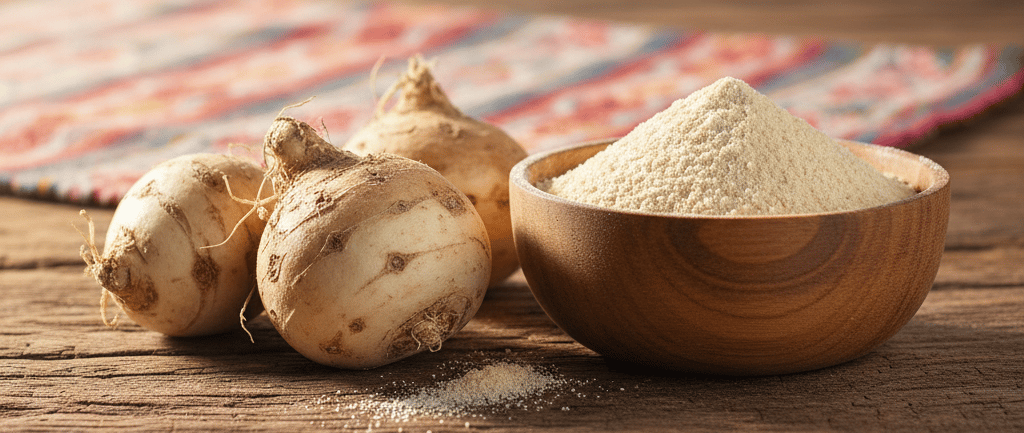Maca Root: The Peruvian Superfood That's Actually Worth the Hype
Maca grows high in the Andes Mountains of Peru, thriving in harsh conditions where few other plants survive. The root has been cultivated for over 2,000 years, and indigenous Peruvians have long valued it as both food and medicine. It's related to broccoli and cabbage, though you wouldn't guess it from its radish-like appearance.
PLANTS
11/1/20252 min read


Walk into any health food store these days, and you'll likely spot maca root powder sitting on the shelves. This unassuming beige powder has quietly become one of the most talked-about natural supplements for women's health. But what's driving the buzz? After exploring the research and listening to real experiences, I've found that this ancient Peruvian root has earned its place in the wellness spotlight.
What Exactly Is Maca Root?
Maca grows high in the Andes Mountains of Peru, thriving in harsh conditions where few other plants survive. The root has been cultivated for over 2,000 years, and indigenous Peruvians have long valued it as both food and medicine. It's related to broccoli and cabbage, though you wouldn't guess it from its radish-like appearance.
The root comes in three main varieties—yellow, red, and black—each with slightly different properties. Yellow maca is the most common, while red and black varieties are typically used for more specific health goals.
Why Women Are Turning to Maca
Here's where things get interesting. Many women discover maca when they're searching for natural ways to support their hormonal health. While maca doesn't contain hormones itself, research suggests it may help the body maintain hormonal balance by supporting the endocrine system.
Women going through perimenopause and menopause often report that maca helps them manage some of their most frustrating symptoms. Hot flashes, mood swings, and sleep disturbances might become more manageable. Of course, everyone's experience is different, but the anecdotal evidence is compelling.
Energy is another big reason people reach for maca. Unlike coffee, which can leave you jittery and crashed a few hours later, maca provides a steadier sense of vitality. Athletes have used it to support endurance and stamina, and some studies back up these traditional uses.
How to Actually Use Maca Root
Maca typically comes in powder or capsule form. The powder has an earthy, slightly nutty taste that works surprisingly well in smoothies, oatmeal, or even coffee. Start with a small amount—around half a teaspoon—and gradually increase to 1-3 teaspoons daily as your body adjusts.
Some people notice effects within a few days, while others need several weeks. Consistency matters more than the dose, so find a routine that works for you and stick with it.
One tip I wish someone had told me earlier: take breaks. Some practitioners recommend cycling maca—using it for a few weeks, then taking a week off. This may help prevent your body from adapting too much to its effects.
Is Maca Right for You?
While maca is generally safe for most people, it's not a one-size-fits-all solution. If you're pregnant, nursing, or dealing with hormone-sensitive conditions, talk with your healthcare provider first. The same goes if you're taking medications that affect hormone levels.
Quality matters tremendously with maca. Look for organic, gelatinized maca (which is easier to digest) from reputable sources. Cheaper products might be diluted or contaminated, which defeats the entire purpose.
Take the Next Step in Your Wellness Journey
If you're curious about how maca root might support your unique health needs, visit herbalwomenshealth.com to explore high-quality maca supplements and get personalized guidance. Their team understands that women's health isn't one-dimensional, and they're committed to helping you find natural solutions that actually work.
Your body knows what it needs—sometimes it just needs a little support from plants that have been trusted for thousands of years.